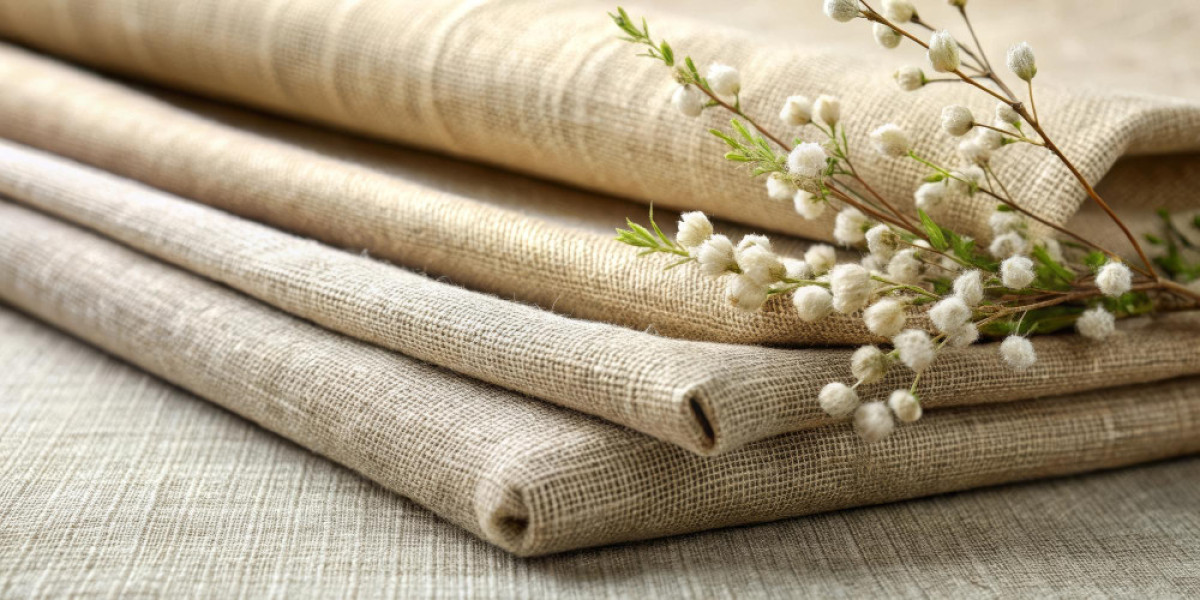Launching a fashion startup presents significant hurdles, especially when it comes to managing production costs. Material sourcing is a major expense, and smart choices here can define a brand's profitability. Linen offers a cost-effective and high-value solution for new fashion businesses looking to balance quality with budget. By implementing strategic sourcing methods, startups can significantly lower their expenses while offering a premium product.
This post will detail practical strategies for sourcing linen fabric efficiently. We will cover the benefits of using linen, effective ways to buy fabric online, and resources to help you manage your supply chain.
Why Choose Linen?
Linen is an excellent material for fashion startups due to its unique combination of durability, sustainability, and versatility. These qualities not only appeal to modern consumers but also provide tangible business advantages.
- Durability: Linen is known for its strength and longevity. Garments made from linen can withstand frequent wear and washing, which adds to their value. For a startup, offering durable products builds brand reputation and customer loyalty.
- Sustainability: Linen is derived from the flax plant, which requires less water and fewer pesticides to grow than cotton. As consumers become more environmentally conscious, offering products made from sustainable materials can be a powerful selling point. This aligns your brand with a growing market demand for eco-friendly fashion.
- Versatility: Linen fabric works well for a wide range of clothing, from casual shirts and dresses to more structured trousers and jackets. Its breathable, absorbent nature makes it comfortable to wear in various climates, expanding its market appeal. This versatility allows startups to create a diverse collection with a single core material.
Smart Sourcing Strategies for Linen Fabric
Effective sourcing is critical for managing costs. Here are three practical strategies for acquiring linen fabric wholesale without compromising on quality.
Buy Directly from Manufacturers
One of the most effective ways to reduce costs is to bypass intermediaries and purchase linen fabric directly from manufacturers. Wholesalers and distributors add their own markups, which increases your per-yard cost. Establishing a direct relationship with a mill can secure better pricing, especially as your order volume grows.
To find manufacturers, attend textile trade shows, use B2B platforms like Alibaba, or search online directories. When contacting them, be prepared to discuss your specific needs, including fabric weight, weave, and desired finishes. While many manufacturers have high minimum order quantities (MOQs), some are willing to work with startups to build long-term partnerships.
Purchase in Bulk
Buying fabric in larger quantities almost always results in a lower price per yard. While this requires a larger upfront investment, the long-term savings can be substantial. Startups should carefully forecast their production needs to determine a bulk order size that is manageable.
Pooling orders with other small brands is another way to meet MOQ requirements and access bulk pricing. This collaborative approach allows multiple startups to share the cost and benefits of a large fabric purchase. Online forums and local fashion industry groups are good places to connect with other designers who may be interested in a joint purchase.
Use Fabric Remnants and Deadstock
Fabric remnants and deadstock are materials left over from larger production runs. These can often be purchased at a significant discount from fabric warehouses or online marketplaces. Sourcing deadstock is also a sustainable practice, as it prevents quality fabric from ending up in a landfill.
This strategy is particularly useful for creating limited-edition collections or one-of-a-kind pieces, which can generate buzz for a new brand. Websites specializing in deadstock fabric make it easy to buy fabric online and find unique, high-quality materials at a fraction of the original cost.
Case Studies: Successful Linen Sourcing
Several fashion startups have successfully used smart sourcing to build their brands.
For example, a boutique brand specializing in summer dresses was able to reduce its material costs by 30% by switching to a direct-from-mill sourcing model for its linen fabric. Initially, the brand worked with a local wholesaler, but as demand grew, the owners negotiated a deal with a linen manufacturer in India. This not only lowered their costs but also gave them greater control over fabric customization.
Another startup focused on sustainable menswear built its entire first collection using deadstock linen. By sourcing high-quality, forgotten fabrics, the brand created a compelling story around sustainability and resourcefulness. This resonated with their target audience and helped them stand out in a competitive market.
Tools and Resources for Sourcing
Finding reliable suppliers is a key step in building a resilient supply chain. Here are some resources to help your fashion startup find and manage linen fabric suppliers:
- Online B2B Marketplaces: Websites like Alibaba, IndiaMART, and Kompass connect businesses with manufacturers and wholesalers around the world. These platforms allow you to compare suppliers, request quotes, and order samples.
- Fabric Sourcing Agencies: For startups without the time or expertise to manage international sourcing, an agency can be a valuable partner. These firms handle supplier verification, price negotiation, and logistics for a fee.
- Textile Trade Shows: Events like Premiere Vision and Texworld are excellent opportunities to meet suppliers in person, see new materials, and network with other industry professionals.
- Online Fabric Stores: A growing number of online stores specialize in selling wholesale and deadstock fabric. These are great resources for finding unique linen fabric and buying smaller quantities.
Improve Your Bottom Line with Smarter Sourcing
For fashion startups, controlling costs is essential for survival and growth. Linen is a high-value material that can form the foundation of a successful collection. By sourcing linen fabric strategically—whether buying direct, purchasing in bulk, or using deadstock—you can significantly lower your expenses.
Adopting these sourcing methods will not only improve your brand's profitability but also strengthen your supply chain. Start applying these practical steps today to build a more resilient and competitive fashion business.








